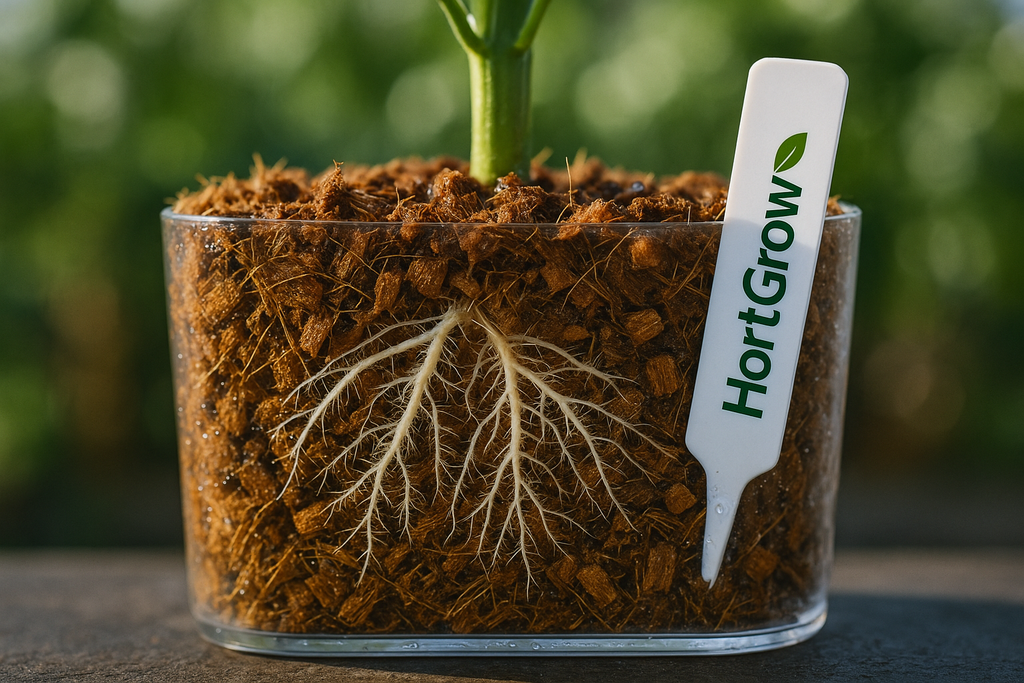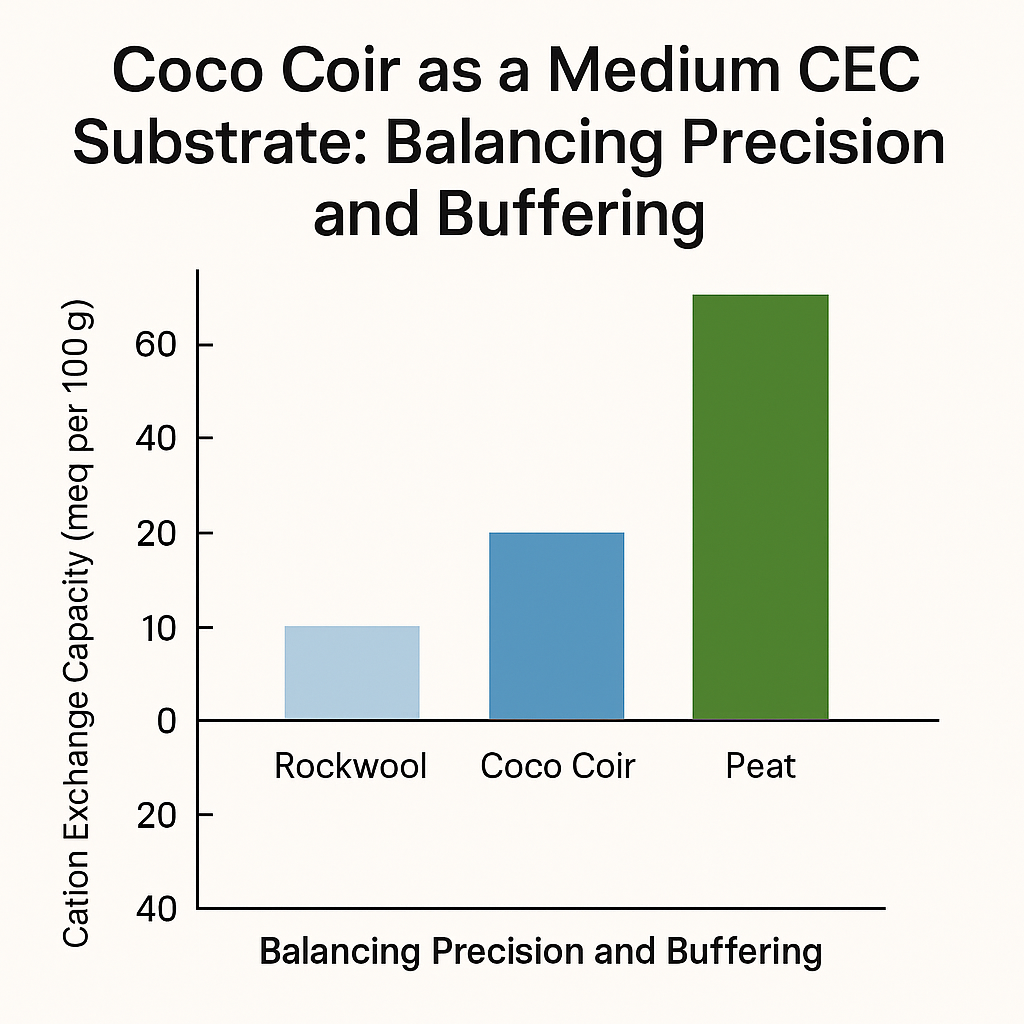Dealing with Phosphorus “Lockout” in Coco Coir - Part 2

Global Supply
Phosphorus is found in small concentrations but wide distribution in the entire Earth’s crust. However, free phosphorus doesn’t exist on the Earth’s crust, due to it being highly reactive. Mined phosphate fertilizer reserves have been estimated to last at least until the year 2300, with 80% of the global phosphorus supply located in Morocco and Western Sahara. Due to recent global conflicts, the cost of phosphate fertilizer has significantly increased.
The concept of "peak phosphorus" highlights the finite nature of phosphorus resources and the need for optimized management practices. Phosphate rock, the primary source of phosphorus for fertilizer production, is a non-renewable resource with limited reserves. As global demand for phosphorus fertilizers continues to rise, concerns regarding resource depletion and environmental sustainability have gained significance.
Additional pressure comes from environmental concerns. Phosphate fertilizer runoff from large agricultural operations is one of the leading causes of waterway contamination, causing fish die-off and algae blooms in freshwater lakes and rivers, as well as in our oceans.
Recent rises in cost of phosphate fertilizers are resulting in growers having to optimize their use of these fertilizers, both for economic reasons, as well as environmental reasons.

Optimizing Phosphorus to prevent Lockout in Coco Coir?
So how can growers prevent this condition from happening in the first place? Conventional wisdom says that “An ounce of prevention is worth a pound of cure”, and this very much applies to phosphate fertilizers. Phosphorus lockout typically happens in soilless mediums when two specific conditions coincide: an overabundance of free phosphate and insufficient water.
Some hydroponic fertilizers can contain an excessive amount of phosphorus. This is the “P” % in the “NPK” rating on a fertilizer label. In coco coir, phosphorus concentrations should be in the range of 15-50 mg/L (ppm) for vegetative growth, and no more than 100 mg/L (ppm) during flowering or generative growth. Essentially, you want the plants to consume 90% or more of the phosphorus you are feeding in a day, and not leave a lot of free phosphate in the media for the overnight dry down cycle. This exact concentration may vary depending on the environment, container size, and evapotranspiration rates. It should also be noted that phosphoric acid based pH-down products may contribute to increased phosphorus concentrations in your nutrient solution.
Another factor is dry down cycles. For coco coir, a 2-4% dry down between irrigation events is recommended during the day, when using precision irrigation. Overall root zone dry down should never exceed 30%, as this is where lockout issues will begin, especially in the presence of excess free phosphate. If a grower is unable to reduce the amount of phosphate in their nutrient solution, it is best to keep the media slightly more saturated and also increase daily run-off volume, in order to prevent an excess of phosphate build up. The consequence of this method is greater cost in water and fertilizer use.
It may seem counterintuitive that feeding less phosphorus will actually maintain a greater phosphorus availability to the plants, but it has been proven to prevent the issue, as well as being a more economical choice, and allows for the grower to have greater dry downs and less run-off without experiencing these issues.
Other methods of preventing phosphorus lockout that will be covered involve using various non-plant food additives. Some of these, when used appropriately, can be used both to prevent and cure a lockout condition.

How to fix Phosphorus Lockout once it occurs?
So we have covered how to prevent phosphorus lockout by controlling irrigation and fertilizer concentrations, but what about if you already are experiencing lockout symptoms? How can growers recover or repair an existing issue with lockout? In this section we will discuss some additives and methods to recover and repair an existing crop that is dealing with phosphorus lockout issues.
-
“Flushing”
This involves rinsing the media with a light EC solution or zero-phosphate solution (part A only). It should be noted that coco based media should not be flushed with just water. -
Fulvic, Humic, and Humate
Fulvic Acid, Humic Acid, and Humate are all fractions of humus, the compost end-product. All of these products are great at complexing and keeping phosphorus mobile, however humate is non-water soluble, and humic acid is incompatible with injection systems. Fulvic acid is the best choice for full solubility and readiness for mixing in concentrated solutions. -
Phosphorus Solubilizing Microbes
A special set of microbes that assist plants in breaking insoluble phosphate bonds. These can help with lockout and help build stronger roots. The function in breaking down phosphorus and delivering it to the plant in exchange for a root exudate, such as a carbohydrate or sugar. The downside is applying these products regularly can become cost prohibitive for large scale facilities. -
Enzymes
Various enzyme products can assist in breaking down insoluble phosphate bonds, however the shelf life and quality of these products can be questionable. -
Sugars
Although sugars and carbohydrates don’t directly assist in increasing phosphorus uptake, they do feed and activate the phosphorus solubilizing microbes that may exist in the media. -
Amino Acids
Although it is not well studied how or why amino acids function in respect to phosphorus, it has been observed that amino acid products applied to the media do help to triple phosphate uptake and double the rate at which phosphorus moves in the media itself. -
Organic Acids
Organic acids include compounds like citric acid and acetic acid. They do help release some locked out phosphorus, however they are not recommended for long term use and can also come with other contaminants. -
Hypochlorous Acid and Chlorine Salts
Chlorine acids and salts do not assist in freeing insoluble phosphorus. They are only effective with reducing and preventing biofilms. Although these products have recently become popular for keeping drip emitters clean, they are not effective at preventing mineral buildup, especially with phosphate salts. -
Foliar Feeding
Foliar feeding can be an important protocol when dealing with any plant health or nutrient challenge. Foliar feeding helps close the gaps when there is any kind of root zone limitation or nutrient deficiency. When dealing with phosphorus lockout, foliar feeding a complete fertilizer, or a balance of calcium, phosphorus, magnesium, zinc, and copper may help alleviate nutrient stress. Although these nutrients may not be supplied in adequate amounts through foliar feeding, it can help stimulate the plant to produce enzymes and exudates that can unlock root zone problems.
In conclusion, dealing with phosphorus in coco, less is more. Prevention is better (and cheaper) than overfeeding phosphorus with diminishing returns or having to fix a lockout issue afterwards. Many of the above mentioned inputs and products can help overcome lockout issues, but more than one may need to be employed if experiencing these issues. Growers can take diligence and keep the phosphorus flowing.





